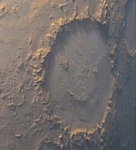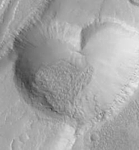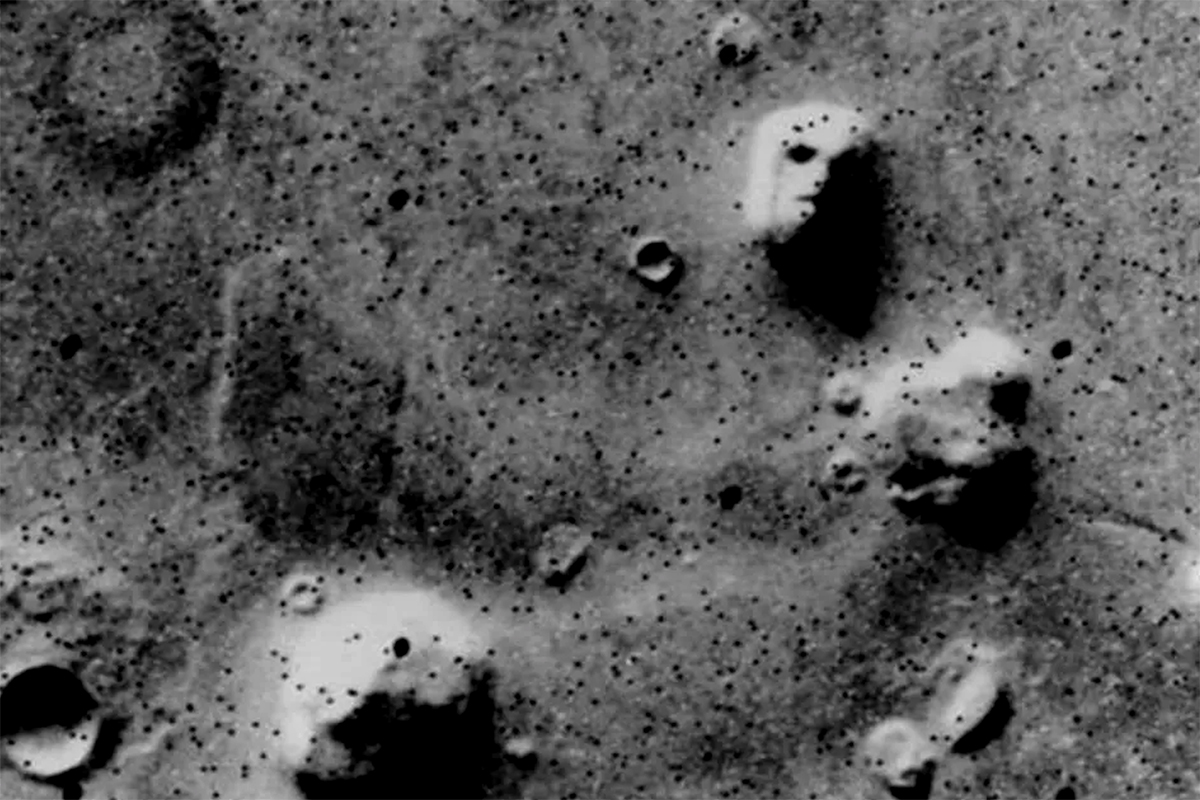Therefore…
The famous "face on Mars" is nothing more than a natural rock formation in the Cydonia region, a collapsed and eroded hill, which in the past could possibly have been part of a beach that had liquid water, like the surrounding formations, with shapes similar to "pyramids". Despite the resemblance to a human face revealed by the Viking mission in 1976, it was shown that the "face" was indeed a play of light and shadow helped by the blurriness of the image, because the instruments did not yet have such good resolution. The images provided by the Mars Global Surveyor and Mars Express probes, in 1998-2001 and 2006 respectively, confirmed this hypothesis and gave us spectacular images of Cydonia, which despite not having artificial constructions, show a landscape of special interest to planetary geologists, due to the particular characteristics that could have formed this Martian region.
 |
 |
Disappointed with the actual shape of the “face on Mars”? Below you will see 3 images of Mars that are also quite curious, in order to give a “happy” and “romantic” sense to this matter.



Happy face on Mars
The first of these is the "happy face crater", a Martian region where, simply by a topographic coincidence, a smiling face appears to be visible. Its real name is Galle Crater, and it is about 215 km in diameter.
1st martian heart
The second is a "heart" (a very pretty one, by the way), discovered by the Mars Global Surveyor in 1999; this is simply a depression in the surface about 2.3 km wide, formed along a fault line.
2nd Martian heart
And finally, another heart! Also discovered by the Mars Global Surveyor (and published just before Valentine's Day 2000), it is a plateau approximately 255 meters long, in the southern polar zone of the red planet.


